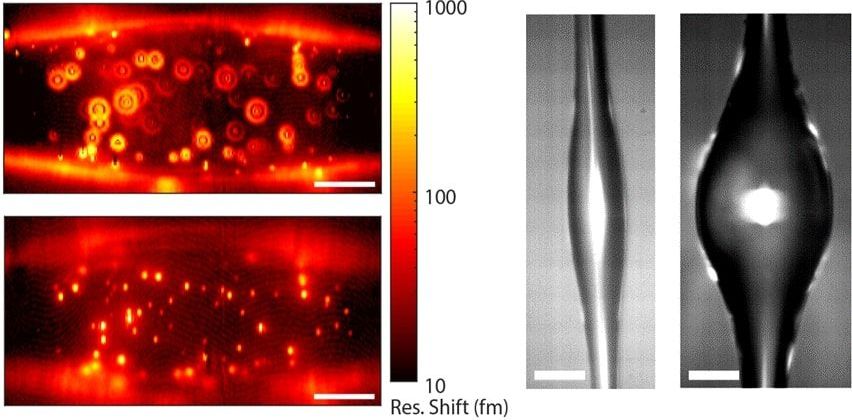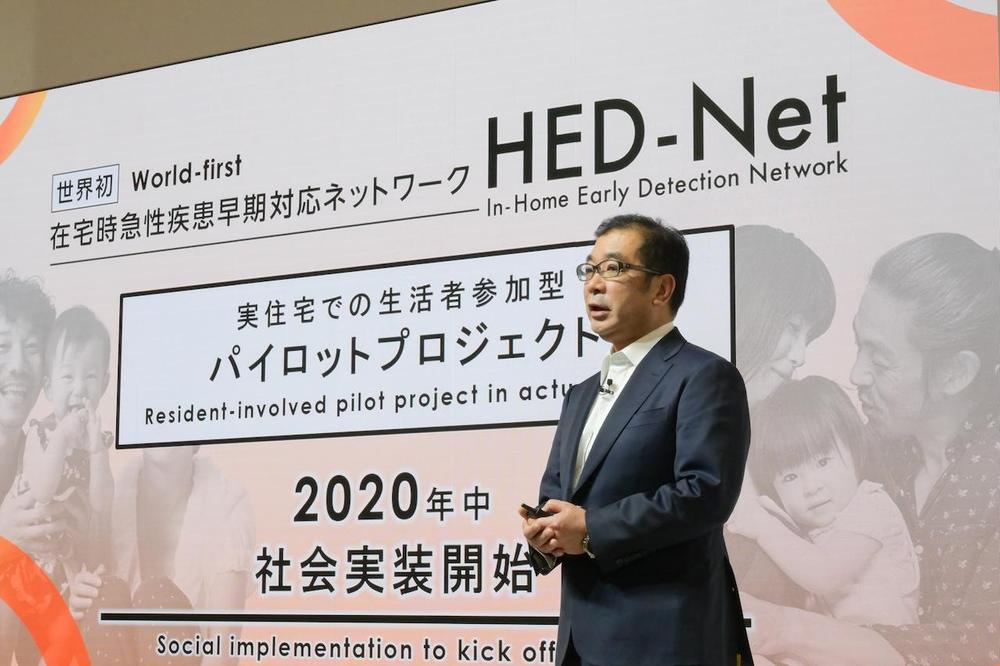Page 7228
Jan 16, 2020
Did the universe design itself?
Posted by Paul Battista in categories: alien life, physics
Many philosophers and scientists believe that we need an explanation as to why the laws of physics and the initial conditions of the universe are fine-tuned for life. The standard two options are: theism and the multiverse hypothesis. Both of these theories are extravagant and arguably have false predictions. Drawing on contemporary philosophy of mind, I outline a form of panpsychism that I believe offers a more parsimonious and less problematic explanation of cosmological fine-tuning.
Jan 16, 2020
Microresonator Measures and Images Nanoparticles with High Degree of Sensitivity
Posted by Omuterema Akhahenda in categories: biological, food, nanotechnology, particle physics
#biophotonics #photonics
ONNA, Japan, Jan. 13, 2020 — Scientists at the Okinawa Institute of Science and Technology (OIST) Graduate University have developed a light-based device that can act as a biosensor, detecting biological substances in materials, such as harmful pathogens in food. The scientists said that their tool, an optical microresonator, is 280× more sensitive than current industry-standard biosensors, which can detect only cumulative effects of groups of particles, not individual molecules.
Jan 16, 2020
This New Sensor Could Start Pushing Smart Home Technology From ‘Nice To Have’ To ‘Must Have’
Posted by Genevieve Klien in categories: habitats, health
Sekisui House has upped its ante in a potentially game-changing, life-altering home health technology at this year’s CES.
Jan 16, 2020
Blue Origin steadily preparing for New Glenn rockets in Brevard
Posted by Genevieve Klien in category: space travel
In this excerpt from FLORIDA TODAY’s Eye on Brevard, space reporter Emre Kelly talks about Blue Origins’ progress on the Space Coast.
Rob Landers, FLORIDA TODAY
Jan 16, 2020
Cuba found to be the most sustainably developed country in the world
Posted by Brent Ellman in categories: economics, education, health, sustainability
Cuba is the most sustainably developed country in the world, according to a new report launched on November 29. The socialist island outperforms advanced capitalist countries including Britain and the United States, which has subjected Cuba to a punitive six-decades-long economic blockade. The Sustainable Development Index (SDI), designed by anthropologist and author Dr Jason Hickel, calculates its results by dividing a nation’s “human development” score, obtained by looking at statistics on life expectancy, health and education, by its “ecological overshoot”, the extent to which the per capita carbon footprint exceeds Earth’s natural limits. [block: views=node_blocks-related].
Jan 16, 2020
AlphaZero learns to rule the quantum world
Posted by Quinn Sena in categories: computing, information science, quantum physics
The chess world was amazed when the computer algorithm AlphaZero learned, after just four hours on its own, to beat the best chess programs built on human expertise. Now a research group at Aarhus University in Denmark has used the very same algorithm to control a quantum computer.
All across the world, numerous research groups are attempting to build a quantum computer. Such a computer would be able to solve certain problems that cannot be solved with current classical computers, even if we combined all these computers in the world into one.
At Aarhus University, researchers share the ambition of building a quantum computer. For this reason, a research group under the direction of Professor Jacob Sherson has just used the computer algorithm AlphaZero to learn to control a quantum system.
Jan 16, 2020
Making sense of the self
Posted by Xavier Rosseel in categories: biotech/medical, neuroscience
Boston, Mass. — Interoception is the awareness of our physiological states; it’s how animals and humans know they’re hungry or thirsty, and how they know when they’ve had enough to eat or drink. But precisely how the brain estimates the state of the body and reacts to it remains unclear. In a paper published in the journal Neuron, neuroscientists at Beth Israel Deaconess Medical Center (BIDMC) shed new light on the process, demonstrating that a region of the brain called the insular cortex orchestrates how signals from the body are interpreted and acted upon. The work represents the first steps toward understanding the neural basis of interoception, which could in turn allow researchers to address key questions in eating disorders, obesity, drug addiction, and a host of other diseases.
Using a mouse model his lab developed at BIDMC, Mark Andermann, PhD, principal investigator in the Division of Endocrinology, Diabetes and Metabolism at BIDMC and Associate Professor of Medicine at Harvard Medical School, and colleagues recorded the activity of hundreds of individual brain cells in the insular cortex to determine exactly what is happening as hungry animals ate.
The team observed that when mice hadn’t eaten for many hours, the activity pattern of insular cortex neurons reflected current levels of hunger. As the mice ate, this pattern gradually shifted over hours to a new pattern reflecting satiety. When mice were shown a visual cue predicting impending availability of food — akin to a person seeing a food commercial or a restaurant logo — the insular cortex appeared to simulate the future sated state for a few seconds, and then returned to an activity pattern related to hunger. These findings provided direct support for studies in humans that hypothesized that the insular cortex is involved in imagining or predicting how we will feel after eating or drinking.
Jan 16, 2020
AI Can Spot Low Glucose Levels Without Fingerprick Test
Posted by Genevieve Klien in categories: biotech/medical, engineering, robotics/AI, wearables
Researchers have developed a new Artificial Intelligence (AI)-based technique that can detect low-sugar levels from raw ECG signals via wearable sensors without any fingerprint test. Current methods to measure glucose requires needles and repeated fingerpicks over the day. Fingerpicks can often be painful, deterring patient compliance.
The new technique developed by researchers at University of Warwick works with an 82 per cent reliability, and could replace the need for invasive finger-prick testing with a needle, especially for kids who are afraid of those.
“Our innovation consisted in using AI for automatic detecting hypoglycaemia via few ECG beats. This is relevant because ECG can be detected in any circumstance, including sleeping,” said Dr Leandro Pecchia from School of Engineering in a paper published in the Nature Springer journal Scientific Reports.
Jan 16, 2020
Toyota Makes a New $394 Million Bet on Flying Taxis
Posted by Brent Ellman in category: transportation
The deal makes Joby Aviation the best-funded electric vertical take-off and landing startup.


















